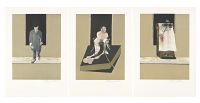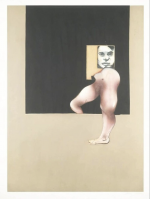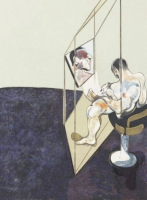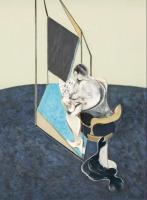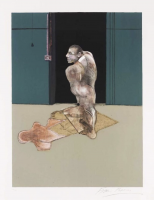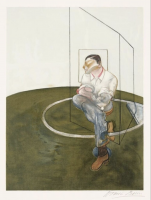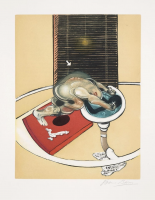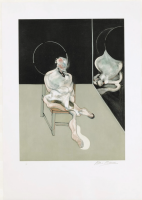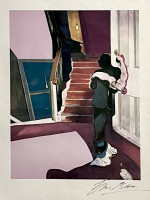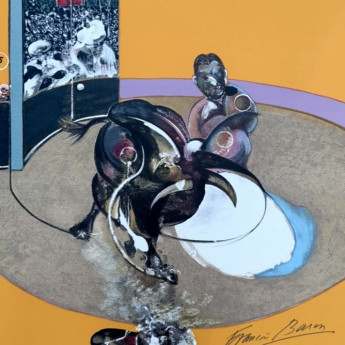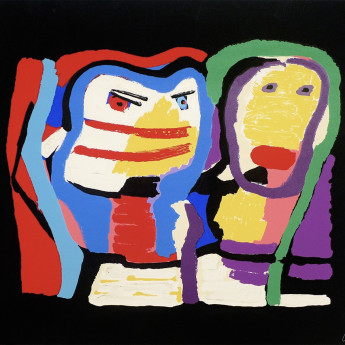Francis Bacon
Francis Bacon (Ireland, 1909–1992) was a revolutionary painter known for his raw, emotive depictions of the human condition. His works, characterized by distorted figures and existential themes, confront vulnerability, isolation, and mortality. Bacon’s bold use of color and unsettling imagery cemented his status as one of the most influential artists of the 20th century.
- Recently Added
- Price (Low-High)
- Price (High-Low)
- Year (Low-High)
- Year (High-Low)
Francis Bacon
Three Studies Of Male Back (One Work - Right Hand Panel Of The Triptych), 1987
Limited Edition Print
Lithograph
Inquire For Price
Francis Bacon
Three Studies Of Male Back (One Work - Central Panel Of The Triptych), 1987
Limited Edition Print
Lithograph
GBP 18,000 - 22,000
Francis Bacon
Study For A Portrait Of John Edwards (s.9495), 1986
Limited Edition Print
Lithograph
GBP 17,000 - 20,000
Francis Bacon
Study For A Portrait Of John Edwards, 1988
Limited Edition Print
Lithograph
GBP 18,000 - 25,000
Francis Bacon
L’Homme Au Lavabo Figure At A Washbasin, 1978
Limited Edition Print
Etching And Aquatint
GBP 19,000 - 23,000
Francis Bacon
Triptych, March 1974 ( Centre Panel ), 1978
Limited Edition Print
Offset Print
EUR 15,450
Francis Bacon
Study For Portrait Of Pope Innocent X After Velasquez, 1989
Limited Edition Print
Lithograph
EUR 60,000 - 70,000
Francis Bacon
Three Studies For A Portrait Of John Edwards, 1980
Limited Edition Print
Lithograph
EUR 57,000 - 70,000
Francis Bacon
Seated Figure, 1983
Limited Edition Print
Etching And Aquatint
Currently Not Available
Francis Bacon
Triptych Inspired By Oresteia Of Aeschylus (s.9503), 1981
Limited Edition Print
Lithograph
Currently Not Available
Francis Bacon
Triptych, 1974-1977
Limited Edition Print
Etching And Aquatint
Currently Not Available

What is Surrealism?
Surrealism began in the 1920s as an art and literary movement with the goal of revealing the unconscious mind and unleashing the imagination by exploring unusual and dream-like imagery. Influenced by Sigmund Freud’s theories of psychoanalysis, Surrealist artists and writers sought to bring the unconscious into rational life, blurring the lines between reality and dreams. The movement aimed to challenge conventional perceptions and express the irrational aspects of the human experience.




